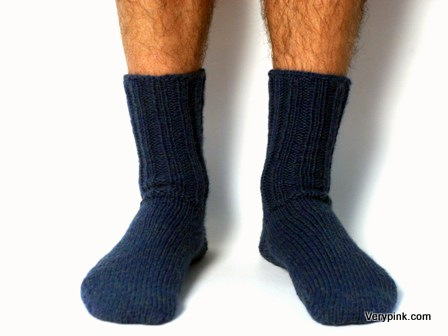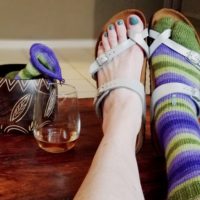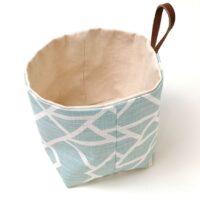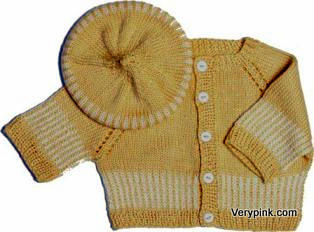
For the first time ever, in sizes for men, women, and kids!
This combination of techniques is such a great way to knit socks, and I’m excited to teach it. First, toe-up is my favorite way to knit socks, because you can use every bit of the yarn with NO LEFTOVERS. Magic loop sock knitting ends up going faster than using double-pointed needles, because you only have to readjust your needles twice in a round, instead of three or four times.
Skill Level: Prior sock knitting experience is helpful. If these are your first attempt at socks, you’ll need strong confidence with basic stitches and pattern reading.
Sizes: Child (5-10 years old), Women, Men (any size, all average widths)
Needles: Size 5 US circular needles with at least a 24” cord
Yarn: 1 skein or hank of worsted-weight yarn (about 100 grams/200 yards) in wool or wool blend. This much yarn will make crew socks in the men’s size (as pictured above), and longer socks in the smaller two sizes.
Additional Materials: Crochet hook in size G or H, scrap yarn, clippie stitch marker, tapestry needle for weaving in ends
Gauge: 5.5 stitches per inch in stockinette
Note on Sizing: The sizing is for average widths, finished sock circumferences 5.75 (7.25, 8)”.
Pattern + links to 5 instructional videos $8 US via PayPal ![]()






Staci, I love your videos. I just had one question. Maybe I misunderstood, but I believe you said you have a pattern for magic loop socks where the toe doesn’t start/end on the top of the toes? If I heard correctly, you called it a toe flap. Where could I find a video or instructions on that? I looked all over the internet, but don’t know what to call it because every search result that comes up is about heel flaps. My daughter won’t wear the socks I made her because they bother her toes, especially on the sides, where the shaping is, but also at the very top of the toes, even on toe up socks. Thanks, and happy holidays.
Hi Demettria – no, I don’t have any sock patterns that have a “toe flap”, sorry. All of my sock patterns (cuff-down or toe-up) have shaping at the sides of the toes. My toe-up patterns start with a provisional cast on about an inch in from the tips of the toes.
S t a c i
Thanks. I’ll try those.
I’ve really appreciated this video. I’ve been knitting for many years, but have very little experience with knitting socks. After checking out your tutorial, I bit the bullet and bought the pattern (I usually go for free patterns. 🙂 ) I’m so glad I did. Your explanations were very helpful and you have such a pleasant way of presenting everything. Now I know how to do the mysterious “magic loop”! I’m working on the ribbing of my first sock, and it’s looks really good. Thanks so much and all the best with your knitting business.
Hi Staci,
Having trouble with my provisional cast on for toe up magic loop. Can I use top down and finish off with Kitchener stitch which I can do?
Many thanks
Carol UK
Carol – If you’re comfortable modifying the pattern, yes, you can do that. But this pattern is really written as a toe-up design. I encourage you to give the provisional cast-on another try, here is another method: https://verypink.com/2016/01/06/provisional-cast-on-using-a-crochet-hook/
This is not a comment but a request for help/advice. No matter how I cast on – long-tail, Portugese style, etc. my cast on row is ALWAYS sloppy. If I cast on tightly to keep it from being sloppy then it is too tight for me to insert needles. I have tried a lot of different cast-on methods hoping one of them would eliminate the problem – with no luck. My other help request is with ribbing, I find it very difficult to tell the difference between a knit or purl stitch when doing ribbing and constantly have to go back to the very first stitch to figure out what my next stitch should be, doesn’t matter what weight of yarn I’m using, I almost always say out loud “knit, purl, knit, purl” (or whatever kind of ribbing I’m doing and I still screw up. Any help suggestions. I LOVE your videos and absolutely thrilled with your Portugese videos – LOVE that style!!”
Debi – regarding your cast-on, I recommend giving metal needles a try, especially ones with a long taper and sharp point. That way you can get a snug, tidy cast-on, and still be able to insert your needle into the stitches. A good choice for you is Knitter’s Pride Platina.
Regarding telling knit from purl stitches, this video should help:
https://verypink.com/2013/03/13/reading-your-knitting/
S t a c i